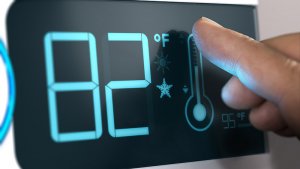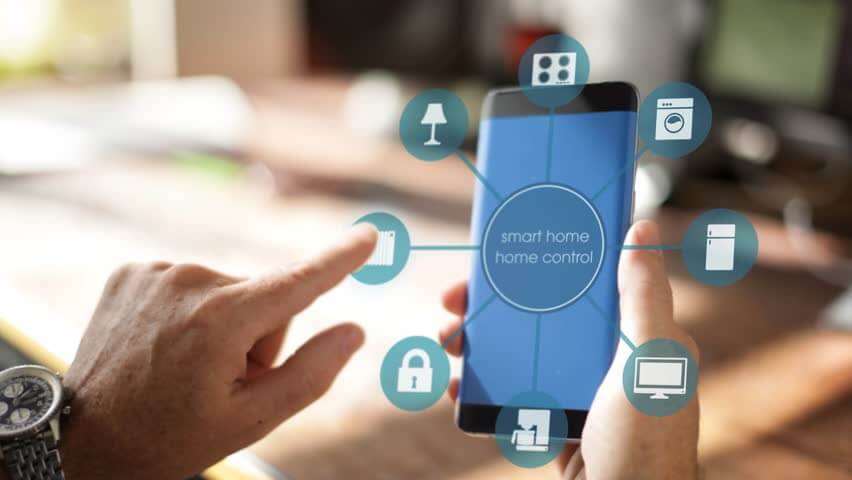It’s been more than ten years since that famous internet mis-explanation “it’s not a truck, it’s a series of tubes” became an instant meme. And now there’s another new tech term in the air than many are struggling to understand: the internet of things. The internet of things, or IOT, comes with quite a lot of jargon—it involves machine-to-machine communication, it relies on networks of data-gathering centers—but at its essence, the IOT is simply connecting new devices to the internet, just like computers. It’s a coffeemaker that’s linked to the alarm clock on your cell phone or the thermostat you can adjust remotely online. It’s a connectivity like nothing we’ve ever seen before. And it’s here to stay in a big way.
These new “smart” devices can communicate not only with the user but also with each other. The WooHoo, a central hub for controlling all the Internet-connected devices in a home, is one of a growing number of products in the smart home sector, the place where the internet of things meets the household department. Joseph Santos, the Chief Digital and Marketing Officer of Smart Beings, explains how the device works with other products: “If you’re in a smart car, and you’re coming home, it will interact with your vehicle and know that someone is coming home, so it will turn on the thermostat, turn on the lights.” By wirelessly communicating with other devices around the home, the WooHoo acts like a tiny robotic butler, unlocking the doors when you arrive at home, adjusting the lighting when you wake in the morning, turning on your favorite music. The small wifi-enabled cylinder has a camera that swivels 360 degrees to survey its surroundings, and uses face- and voice-recognition software to figure out which member of the family is talking to it.
The newest generation of these technologies incorporates not just wifi but artificial intelligence—the ability to learn patterns, recognize faces and voices. Santos says that “A.I. really means that the device, or the entity, needs to know who you are.” The device connects to a software platform that integrates all of the data to figure out each user’s individual preferences.

Some raise concerns about the privacy implications of living and working among so many internet-connected cameras and microphones. The internet privacy hawks at the Electronic Frontier Foundation go so far as to call the IOT “a security nightmare,” because companies coming from backgrounds in consumer electronics may not have the expertise necessary to provide the same high-level data protection. But concerns about security are not stopping consumers from flocking to the products, with analysts comparing the impact of the IOT megatrend to the Industrial Revolution.
A popular application of these technologies in the home is for energy savings, and the same idea has applications outside the home. Smart grid technology, which uses real-time data to adjust supply and demand across whole utility networks, can achieve energy savings on an even greater scale. Companies like Reactive Technologies, which blends energy and telecommunications, use smart meters and the IOT to manage energy use on the demand side. With a new project on the French energy grid, Reactive makes small changes to the energy consumption of fridges and freezers in hundreds of retail locations, making adjustments throughout the day to free up energy when energy demand is high. By working with large businesses—like supermarkets, chain stores, hotels, or office complexes—smart grid companies can see when the overall burden on an electrical grid is greatest, and make small adjustments to save the necessary power.
In an individual home, dimming the lights or turning up the freezer temperature by a degree or two won’t result in much of a difference. But, says Johanna Doyle, Head of Commercial Delivery at Reactive, “where our technology, and the internet of things, really comes into its own is in controlling many multiple hundreds and thousands of devices in real time in a coordinated way.” By “stitching together small changes in the energy consumption,” this technology will create change that, Doyle says, “is to the benefit of energy systems and ultimately society.”
We are sitting at the forefront of tremendous advancement in everything home automation.
Article Provided by: Discovery
![]()
If you would like liquidvideotechnologies.com to discuss developing your Home Security System, Networking, Access Control, Fire, IT consultant or PCI Compliance, please do not hesitate to call us at 864-859-9848 or you can email us at deveren@liquidvideotechnologies.com


Recent Comments